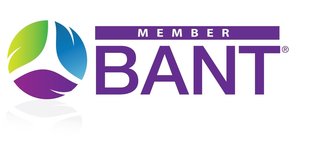 The Montmorency Cherry – a tart little fruit that packs a nutritional punch The Montmorency cherry is a type of sour cherry that has some unexpected and largely unsung health benefits. It is lighter in colour than the deep red cherries that are usually found in the shops and has a tart taste. This variety of cherry is special because it has been shown to have potential health benefits in a number of ways: Sleep - Montmorency cherries contain particularly high levels of melatonin, the hormone produced by the pineal gland that regulates the body’s circadian rhythm and as such is important for sleep[1]. So, having Montmorency cherry juice in the evening when winding down for the day may help you sleep. Gout – Research suggests that Montmorency cherry concentrate may reduce the painful effects of gout. Gout occurs when excess uric acid crystallises in the joints[2]. A study at Northumbria University showed that consuming 30ml of concentrated cherry juice increased the excretion of uric acid and led to a subsequent reduction in uric acid levels in blood by 36% eight hours after drinking the concentrate[3]. If you suffer from gout, introducing some cherry juice into your diet may prove beneficial. Exercise – Studies show that Montmorency cherry juice could reduce muscle damage and improve muscle recovery rate following exercise [4],[5]. The polyphenols in the cherry juice are thought to have an anti-inflammatory and anti-oxidative effect[6]. So, drinking Montmorency cherry juice after may be beneficial after exercise. Blood Pressure – A recent study showed a 7% reduction in blood pressure in men with early signs of high blood pressure when drinking Montmorency cherry concentrate compared to fruit cordial[7]. Those participants with blood pressure at the higher end of the scale experienced the most benefit. This is an area where more research is required but perhaps cherry juice is worth trying if you are concerned about your blood pressure? Montmorency cherries are most readily available as cherry concentrate from health food shops and can be diluted in water or added to smoothies. Montmorency cherry capsules and powder are also available. Please follow manufacturer’s guidelines regarding daily consumption amounts. “I love the sharp taste and have 30ml diluted in water as a treat most evenings. Why not give it a try? ” Top tip: You can buy a convenient pump dispenser for the bottle to accurately measure how much concentrate you are having. ©Sarah Hogarth Nutrition, 2016 References: [1] Howatson G, Bell PG, Tallent J, Middleton B, McHugh MP, Ellis J (2012) Effect of tart cherry juice (Prunus cerasus) on melatonin levels and enhanced sleep quality. European Journal of Nutrition, 51:909-16. [2] Zhang Y, Neogi T, Chen C, Chaisson C, Hunter DJ, Choi HK (2012) Cherry consumption and decreased risk of recurrent gout attacks. Arthritis & Rheumatism, 64:4004-11. [3] Bell PG, Gaze DC, Davison GW, George TW, Scotter MJ, Howatson G (2014) Montmorency tart cherry (Prunus cerasus L.) concentrate lowers uric acid, independent of plasma cyanidin-3-O-glucosiderutinoside. Journal of Functional Foods, 11: 82-90. [4] Bowtell JL, Sumners DP, Dyer A, Fox P, Mileva KN (2011) Montmorency cherry juice reduces muscle damage caused by intensive strength exercise. Medicine & Science in Sports & Exercise, 43:1544-51. [5] Bell PG, Stevenson E, Davison GW, Howatson G (2016) The Effects of Montmorency Tart Cherry Concentrate Supplementation on Recovery Following Prolonged, Intermittent Exercise. Nutrients, 8:441. [6] Levers K, Dalton R, Galvan E, Goodenough C, O'Connor A, Simbo S, Barringer N, Mertens-Talcott SU, Rasmussen C, Greenwood M, Riechman S, Crouse S, Kreider RB (2015) Effects of powdered Montmorency tart cherry supplementation on an acute bout of intense lower body strength exercise in resistance trained males. Journal of the International Society of Sports Nutrition, 16:12:41. [7] Keane KM, George TW, Constantinou CL, Brown MA, Clifford T, Howatson G (2016) Effects of Montmorency tart cherry (Prunus Cerasus L.) consumption on vascular function in men with early hypertension. American Journal of Clinical Nutrition, 103:1531-1539.
1 Comment
|
AuthorSarah Hogarth BA DipION mBANT CNHC ArchivesCategories |
 RSS Feed
RSS Feed

